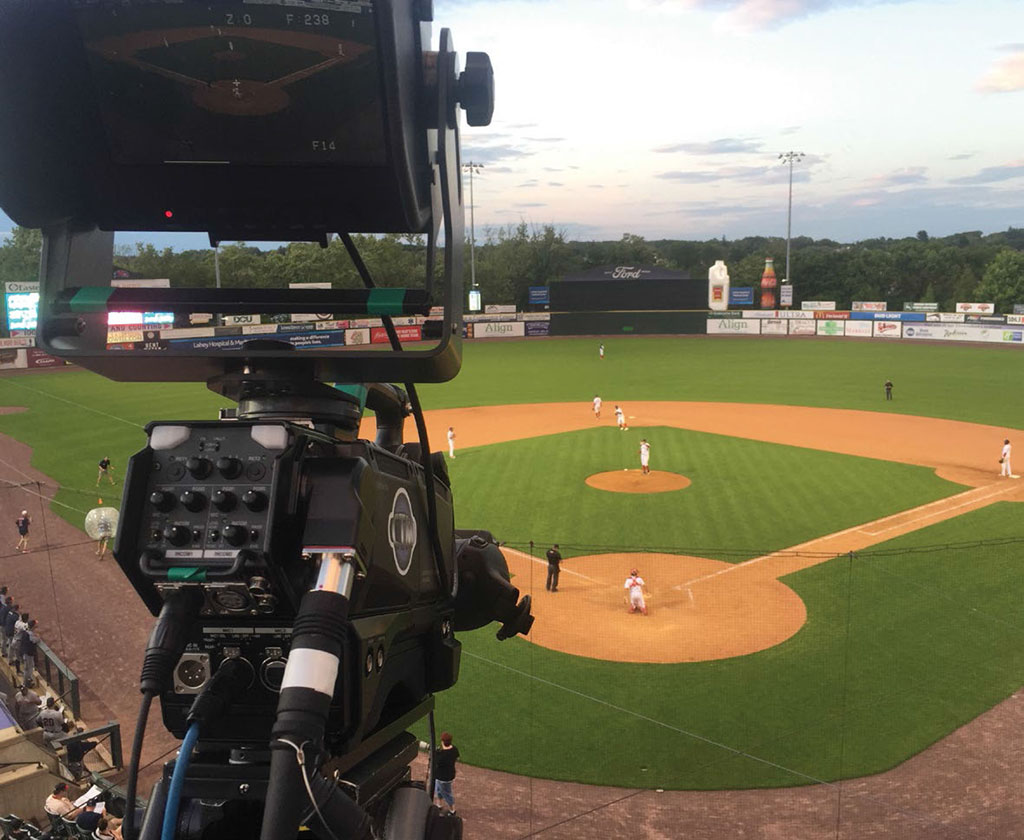Hitachi Cameras Boost Mobile Production Quality for CTM

CHELMSFORD, Mass.—Chelmsford TeleMedia (CTM) provides public access television for the town of Chelmsford, Mass., located 24 miles northwest of Boston. In addition to serving our own government and educational channels, our 35-foot, Gerling-built OB truck is also used for external productions including Minor League Baseball games for the Lowell Spinners, an affiliate of the Boston Red Sox.
While we built the truck three years ago, the budget restrictions common to non-profit organizations forced us to start with older equipment and upgrade it in phases. Last year, we set out to replace the truck’s cameras. While they were HD—like many PEG stations, we can’t broadcast in HD yet, but we deliver HD online—the image quality was not very good. Also, because they weren’t studio-grade cameras, they lacked many features such as return video and tally.
IMMEDIATE DIFFERENCE
In December 2018, we purchased four Z-HD5500 cameras from Hitachi Kokusai through integrator Access AV in Concord, N.H. We love the quality of the images they produce, and as a true studio camera, their rich feature set provides a lot of flexibility. Right away, their compatibility with standard 2/3-inch lenses was an improvement over the 1/3-inch limitation of our previous cameras, allowing us to rent or borrow additional lenses as projects require without needing adapters.
We wanted to get the “best bang for our buck,” while future-proofing ourselves to get a long life cycle out of the cameras. Going with a well-known industry standard like Hitachi Kokusai also helps our bottom line by renting the truck to external clients.
We chose the Z-HD5500 model in particular because of its native 1080p support. While our current Broadcast Pix switcher is 1080i, it will soon be replaced, and we are already feeding 1080p60 into our Ross Mira instant replay system.
The color reproduction from the ZHD5500s is far better than our old cameras, and the skin tones are amazing. Ironically, the first time we shot a basketball game with the new cameras, the visual flaws in our gym—such as peeling paint—really stood out. Even though our old cameras were HD, they couldn’t see that level of detail. The difference is night and day.
SEEING THE LIGHT
Lighting used to be a challenge—particularly at concerts, we often had hot spots from student-focused lighting and instruments without diffusion—but being able to remotely shade the Z-HD5500s from the truck has made the complete system work much better. Conversely, our theatre productions are often very darkly lit, but with the Hitachi cameras, even under dark conditions we get a good-quality image without the picture getting grainy, and because we don’t need to increase the black level or setup, the picture doesn’t wash out.
The cameras’ ease of use has also been a big factor, since our productions are primarily crewed by students and volunteers. As a studio camera, the Z-HD5500s have been significantly easier to set up than our old mix-and-match approach, and our operators find them easy to work with. Last but not least, the bigger, higher-quality studio viewfinder on the Hitachi cameras is a big benefit for our operators, particularly for sports.
Bringing in the Hitachi cameras has drastically improved the quality of our productions. I believe the best result is when people react to a change, and viewers have commented on the difference. The Z-HD5500s have been really great for us, and I look forward to using them on all of our future productions.
Tom Peterson is production engineer at Chelmsford TeleMedia and teaches media and communications at Chelmsford High School. He can be reached attpeterson@townofchelmsford.us.
For more information on Hitachi Kokusai Electric America, visit hitachikokusai.us.
Get the TV Tech Newsletter
The professional video industry's #1 source for news, trends and product and tech information. Sign up below.
